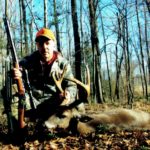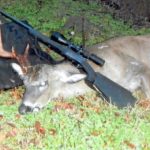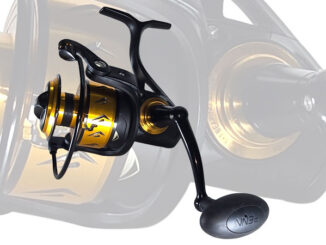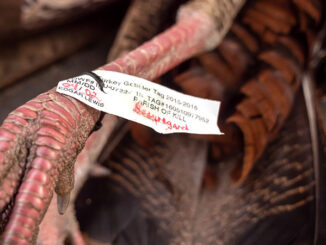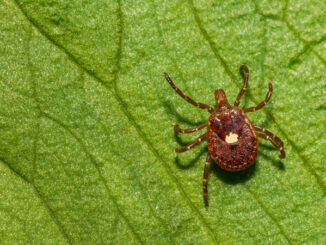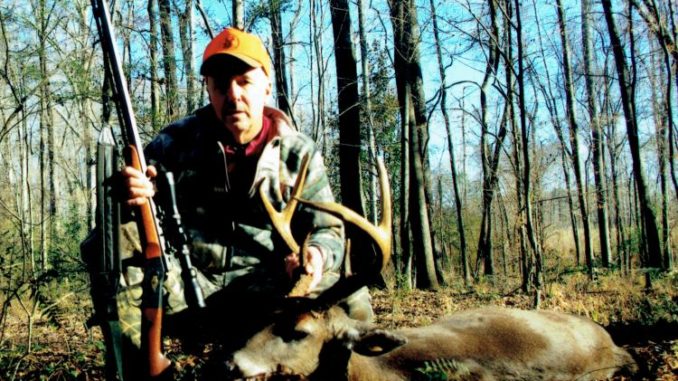
Hunters are killing older bucks — but that doesn’t mean all is well with their management program
Harvest data produced by the LDWF DMAP program shows that hunters are killing more adult bucks than yearling (1 ½ year) bucks. Data from the Quality Deer Management Association also shows this is true in most of the southeast. The management concept of let them go and let them grow has caught on in the southeast. Jimmy Ernst, LDWF DMAP Coordinator, says that today’s hunters are looking for bigger bucks. But an older buck is not necessarily a big buck. For the most part any adult buck on good habitat should have a larger rack than the yearling buck with its first rack. If habitat conditions are poor and deer numbers are above carrying capacity the rack of an adult buck may not be the quality that a hunter is hunting for.
One of the reasons for this increase in buck age in our deer herds is the fact that many Baby Boomer hunters are really not interested in shooting deer like they did in the 80s and 90s and unless the buck will make the cover of a magazine, they don’t pull the trigger. I can’t tell you how many times I have heard a boomer hunter say, “ I am just not mad at the deer anymore.” Heck, I am not mad at them, never have been, but I sure enjoy matching wits with an adult buck, regardless of size. It still excites me to connect with an adult buck, particularly if I have done some work to get it into shooting range, other than pouring corn on the ground.
When DMAP started in the early 80s, the boomer hunters were all gung-ho with harvesting deer. Boomers grew up in the sixties when deer numbers were low and hunted during the time when deer herds began to really increase in numbers. But today with most boomer hunters at or approaching 60, cleaning deer is something many have had enough of. I would encourage these hunters to keep pulling the trigger and donate the deer to Hunters for the Hungry; there are processing facilities set-up where hunters can donate deer and not have to worry with the cleaning. So there is really no reason not to keep shooting deer, especially adult bucks.
Of course many hunters simply cannot decide whether they should shoot or not shoot because they do not understand the growth and development trends of the deer they are hunting. They see an adult buck with a small rack and pass on it thinking it will get bigger. Again, so much depends on the habitat and herd conditions. Changes in the landscape over the past 20 years, especially in the pine forests in this state have made for less than desirable body and antler growth. The harvest data shows that most of the growth occurs between ages 1 and 2. Growth at the older ages is 10 percent or less of the current age. A 3-year-old buck weighing 135 pounds will only gain 14 pounds at age 4. That’s not much of a weight gain which would mean the antler increase would not be much either. This is the reason that average B&C scores annually are around 120. No reason at all that a hunter should not harvest a 3 ½-year-old buck weighing 135 and having a small rack. No amount of age is going to make this buck bigger because there are other factors at work keeping the physical conditions below average.
Most buck harvest programs in the state should probably set goals that allow harvest of bucks 3 ½ years or older. Generally it is easy to recognize 1 ½ and 2 ½ year old bucks based on their physical condition. Yearling bucks are spikes and the two year olds would be small 4-8 pointers. With our current habitat conditions it is probably unwise to try and move deer up into the older age classes by passing up 3 and 4 year old bucks. As deer grow older they wise up to hunters, becoming more nocturnal and harder to kill. Some of the younger bucks are going to grow older anyway so trying to stockpile numbers is not wise. Natural mortality is going to happen and there is nothing worse than finding a nice adult buck on the property that may have died from disease or other causes.
Studies on properties having a high population of adult bucks have shown that more adult bucks died of natural mortality than from hunters. As bucks grow older the competition during the rut increases. Damage to antlers can result in damage to the skull which generally results in a bacteria infection and subsequent death of the buck. A few years ago I was hunting on a property and was walking to my stand when I spotted two bucks feeding on the clover along the woods road. My binoculars revealed that one was an adult buck with a large right beam but the left beam was completely missing. Sensing this was not right and something was wrong with the deer I pulled the trigger and discovered that this 5 ½-year-old buck had indeed shed its left antler early due to an infection of the pedicle bone that was killing the pedicle bone cells. I have no doubt that this buck would have eventually died from a brain abscess.
Years ago when we started DMAP and started looking at harvest data we discovered that on some properties 75 percent or more of the buck harvest were 1 ½-year-old bucks. We began telling clubs and landowners that you have to let some of these go if you want older and larger deer. Over time this idea has taken hold and hunters are letting bucks get older. But hunters need to understand that within the deer herd, there are bucks in each age class that are average, below average and above average. Best results are achieved when the young bucks that are above average are passed up and allowed to grow older. Hunters become confused when the below average bucks are passed and allowed to grow older because these adult bucks generally have small bodies and small antlers and hunters pass them up each year thinking they will get bigger but it just does not happen. Understand the growth and development trends of the deer herd you are hunting and do your part to manage the herd.
